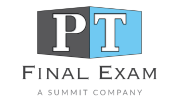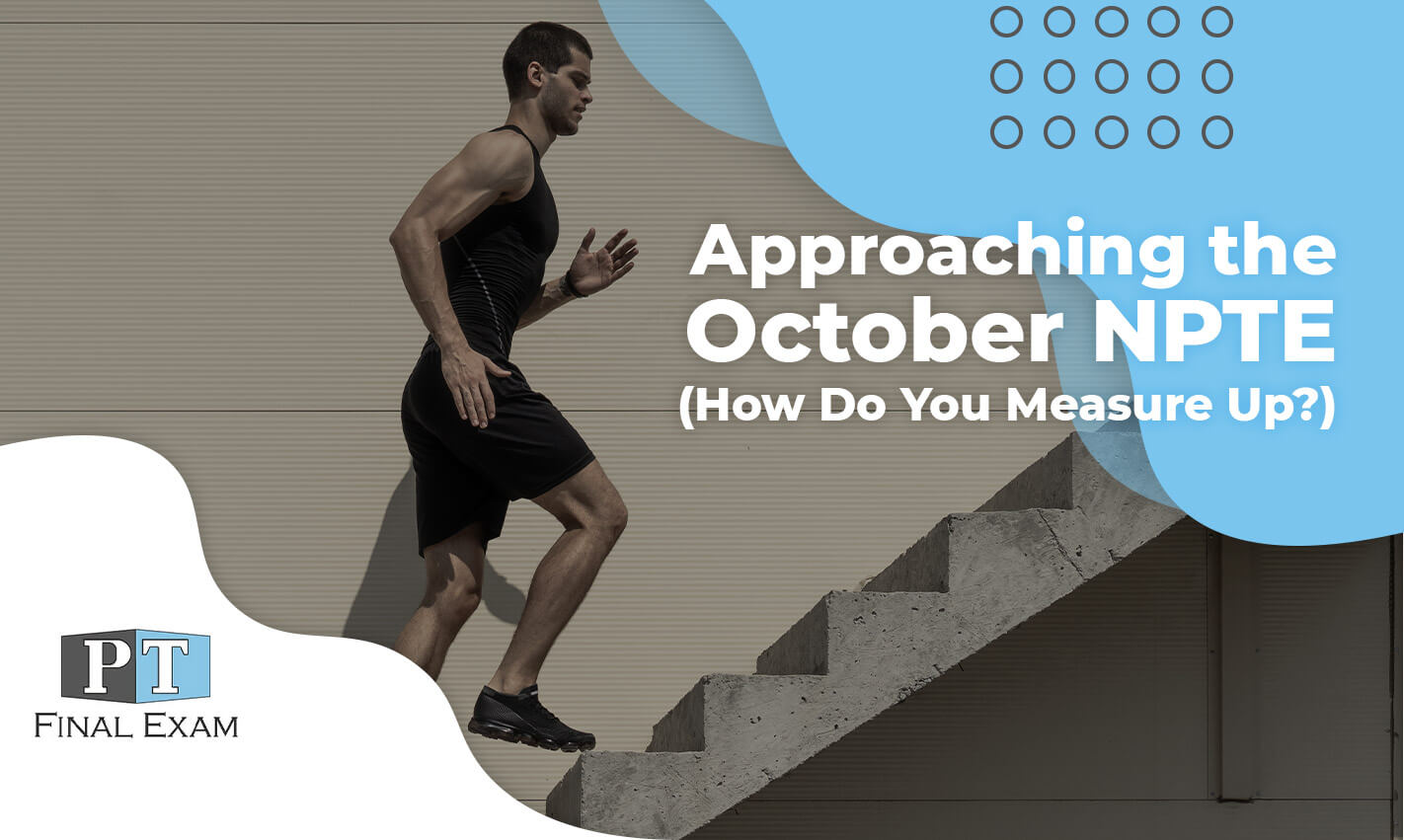I have been getting some feedback following my recent Google Hangout about my strong suggestion to spend time in the standard PT textbooks rather than just in the review books. It seems that many students grab the Scorebuilders or TherapyEd book and just start reading, considering that they are studying well for the exam.
The truth of the matter is that the review books (mine included) are simply review books. They bring you tons of information that has been cut and abbreviated so as to allow you to go over many topics in a short time. This is great ONLY IF you already have some knowledge of the material you are “reviewing.”
You see, the FSBPT is clear in its objective—they are to assess if a candidate has the necessary knowledge to be a physical therapist (or a PTA).
Question Format
The questions on the exam are clinical or scenario-based, requiring you to apply basic principles to unfamiliar or novel situations. Often, there is a picture associated with a question, requiring you to use visual observation to distinguish patterns or observe deviations.
Each question on the exam undergoes rigorous review by the writers as well as a panel of experts in the field of the topic. The questions are designed to assess entry-level knowledge that all physical therapists need when they enter practice.
Important Sources
A key point that I hit time and time again is that the NPTE is written from material in the standard PT textbooks, NOT the review books. This is important to remember. Some of the items in the review books are not always reflective of the most current practice. In fact, sometimes there is contradictory information (some students have pointed out several of these to me).
If you don’t already know the material, using a review book will not be enough.
If you are very confident in a subject (such as orthopedic tests and measures), a review book will be a great way to remind you of some of the finer points.
My Approach
Again, if you can’t tell already, I’m a huge proponent having competent and confident students take the NPTE. The study method that I recommend is based on several key principles:
- Organized—you need to have a plan on how to really study the material. I recommend to all of my students in my Mastermind Study Group to list their top 10 specific weaknesses and suggest that they begin attacking those weaknesses with a vengeance!
- Proportional—check out the FSBPT Content Outline to see what categories are most represented on the NPTE. This will help you avoid spending all of your time on research methods at the expense of memorizing special tests. Use my free Study Outline as a checklist.
- From the Original Source—if you’re not spending time in your standard PT books, you’re making a mistake. For instance, when you come to the topic of stress urinary incontinence interventions, the review books have a brief description. If you go to Kisner and Colby’s Therapeutic Exercise, you’ll get a few whole sections and diagrams on the topic. Thus, when a question arises on the NPTE, you would have a deeper understanding of the principle
Don’t get me wrong—a good review book can be your friend, but should not be your only friend.
I can’t tell you how many students contact me after they fail the NPTE saying, “I underestimated the test and overestimated my understanding,” or “the test was all clinical-based, but I just tried to memorize the lists in the review book.”
Study smarter, not harder.
As always, I hope you’ll contact me or comment to let me know how you approach the NPTE.
Here is the list of the most common books used for the NPTE:
Physical Rehabilitation (O’Sullivan, Physical Rehabilitation)
Therapeutic Exercise: Foundations and Techniques (Therapeutic Exercise: Foundations and Techniques)
Pathology: Implications for the Physical Therapist, 3e
Measurement of Joint Motion : A Guide to Goniometry, 4th Edition
Motor Control: Translating Research into Clinical Practice
Orthopedic Physical Assessment, 6e (Musculoskeletal Rehabilitation)
Physical Therapy for Children, 4e
Guide to Physical Therapist Practice, Rev 2nd Ed
ACSM’s Guidelines for Exercise Testing and Prescription
For a full list, check out the FSBPT Textbook Survey.


